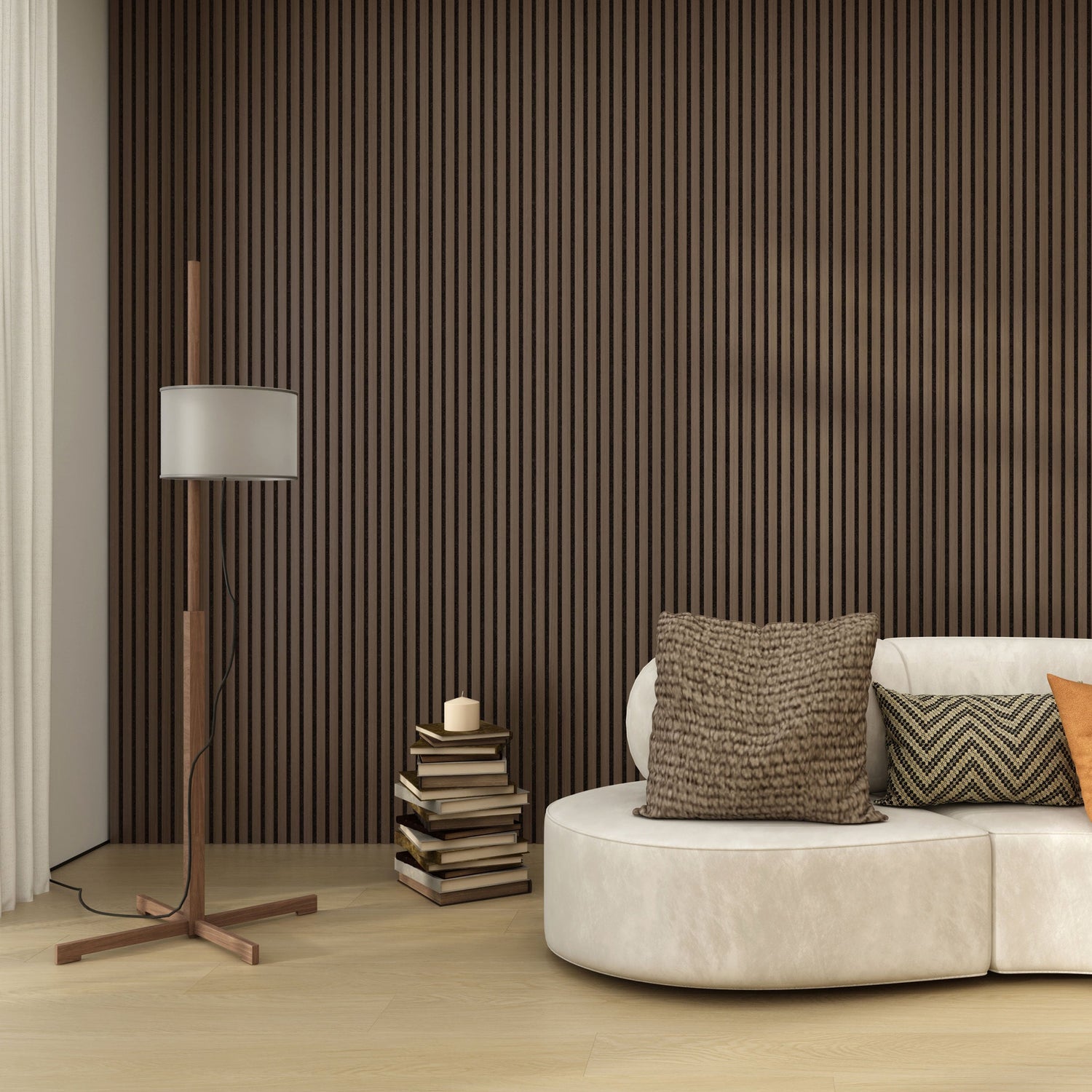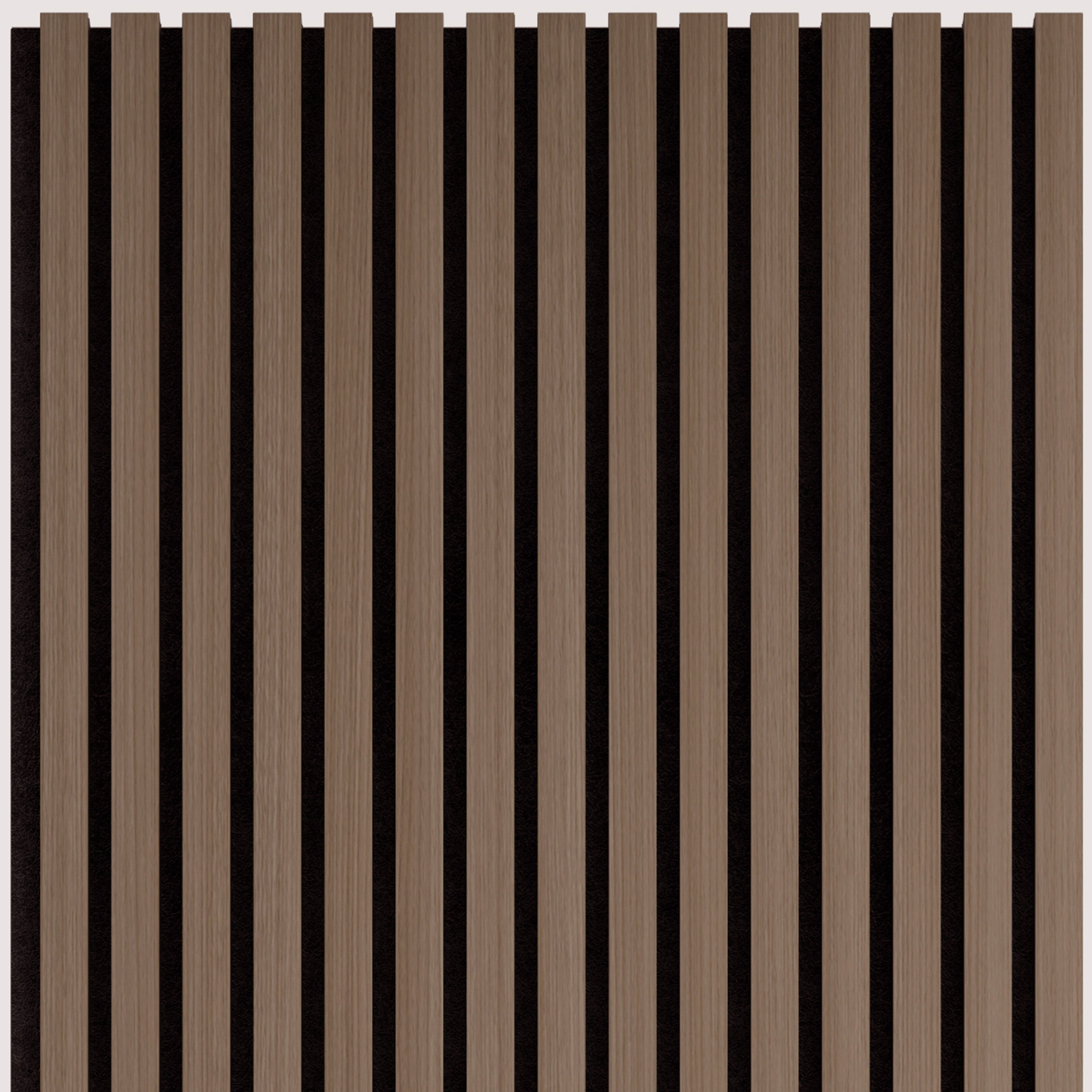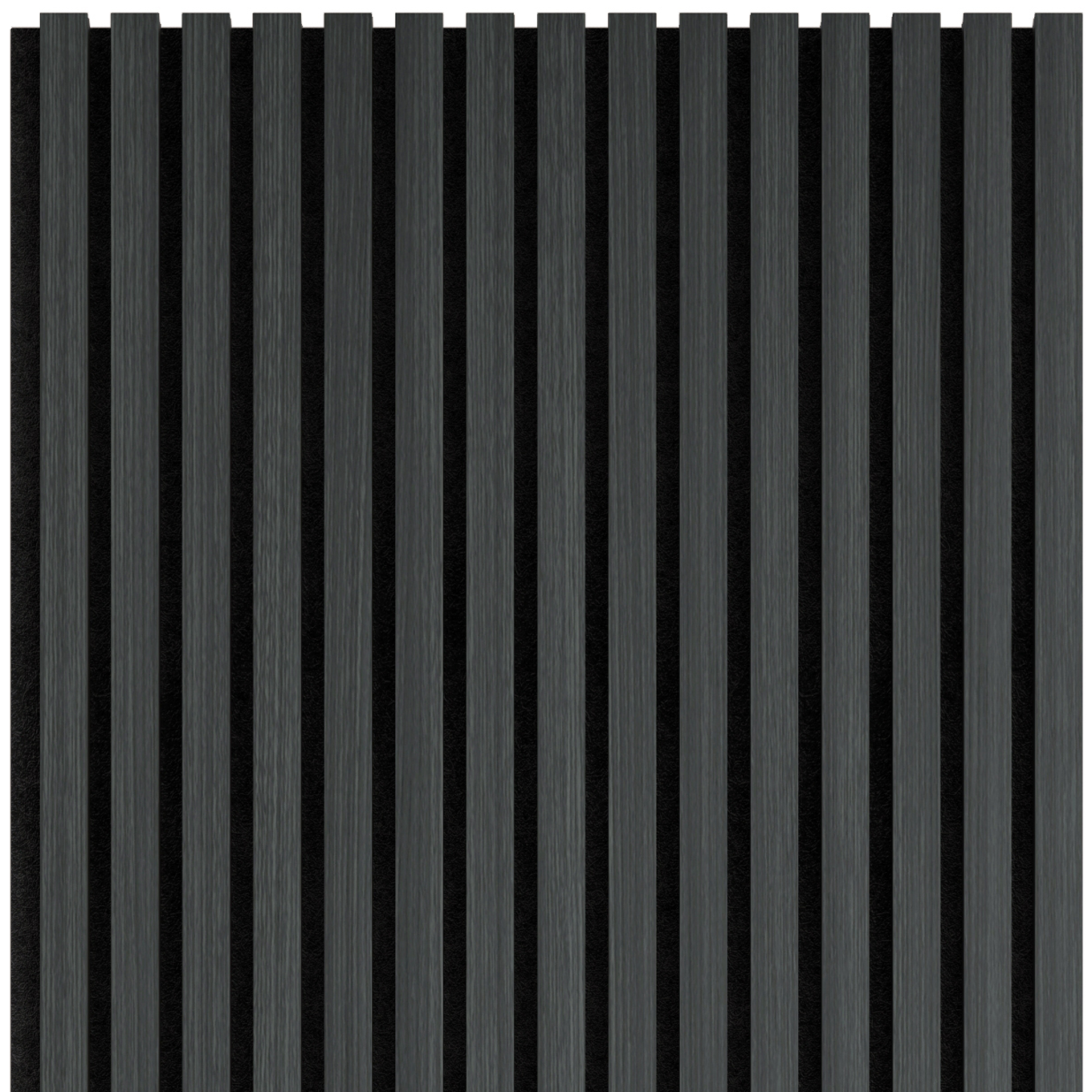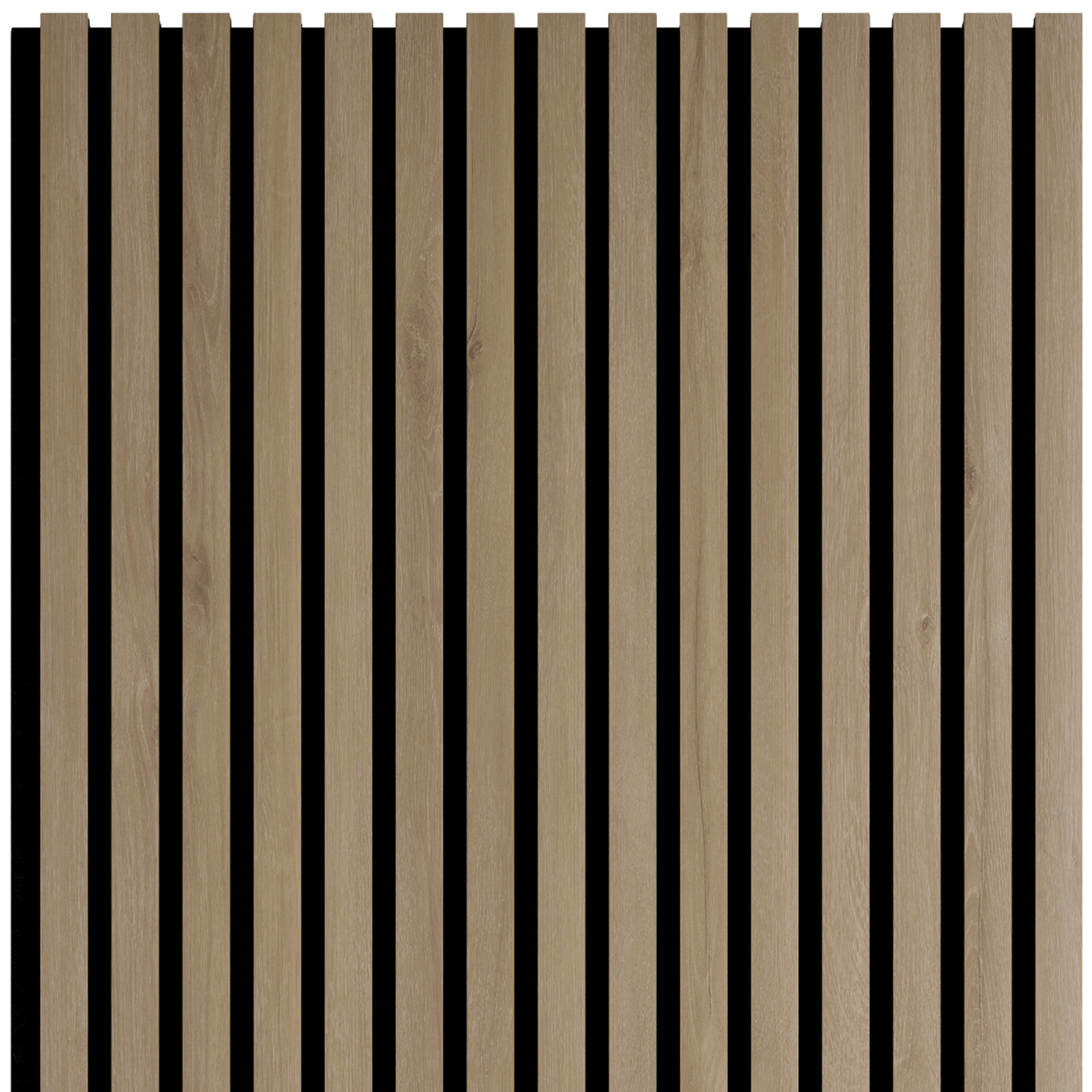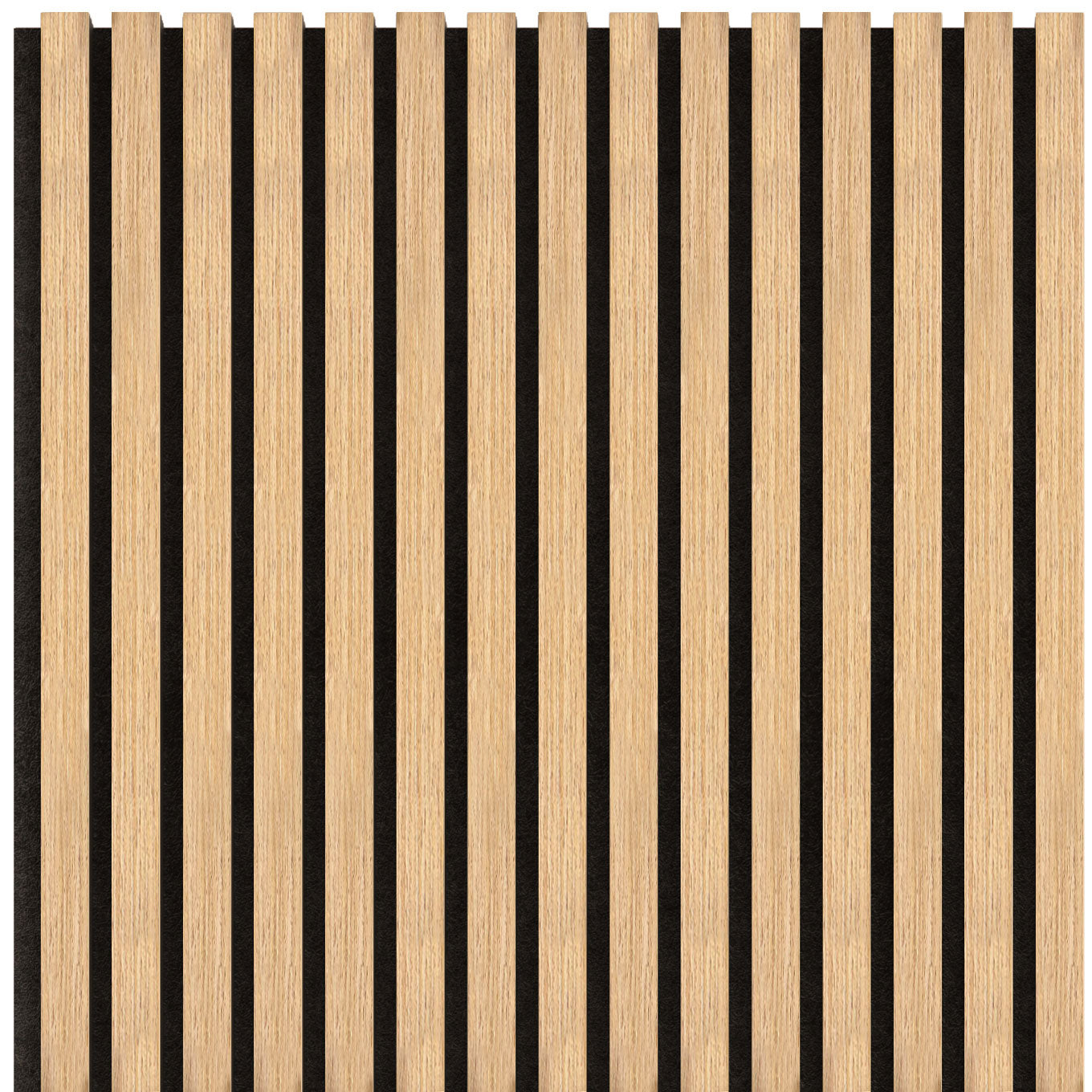
How do acoustic panels improve the sound quality in a room?
Have you ever wondered why some restaurants sound like a train station with lots of echoes, while others allow you to have a comfortable conversation even when they are full of guests? Or why some offices seem "noisy" even though they are not particularly loud? The answer often lies in the acoustics of the space, and this is where acoustic panels or other acoustic solutions come into play.
What do acoustic panels actually do?
Imagine throwing a ball against a wall. If the wall is hard, the ball will bounce back strongly. But if you put a large pillow on the wall, the ball will "sink" into it and not bounce. It's similar with sound - hard surfaces reflect sound, creating echoes and noise, while acoustic panels "absorb" sound like a large pillow.
What makes our panels special is that, in addition to this functional role, they also bring significant aesthetic value to the space. Unlike traditional acoustic solutions that often look industrial or technical, our panels with natural wood finishes become a decorative element that adds a great look to the space. Whether it's warm tones of oak, walnut or black oak, the panels create a look that fits perfectly into any interior. So you get a double benefit - superior acoustics and a beautiful design element that brings a touch of elegance to your space.

How efficient are our panels?
Our acoustic panels have an NRC value between 0.7 and 0.8. But what does that actually mean?
Imagine you have 100 "balls" of sound coming to the panel:
- With an NRC of 0.8, the panel will "catch" 80 balls and only 20 will bounce back.
- With an NRC of 0.7, the panel will "catch" 70 balls and 30 will bounce off
This is an exceptionally good level of absorption that significantly improves the acoustics of the room. For comparison:
- A bare wall has an NRC of around 0.05 (reflects 95% of sound)
- Carpet has an NRC of around 0.2-0.3
- Curtains have an NRC of around 0.5-0.6
The key to creating a pleasant acoustic environment lies in the smart combination of different elements in the space. When we combine acoustic panels (NRC 0.7-0.8) with well-chosen soft furnishings, carpets, curtains and other textile elements, we create a multi-layered solution that not only significantly improves the acoustics, but also visually enriches the space. For example:
- Soft furniture like sofas and armchairs absorb lower frequencies
- Carpets reduce sound reflection from the floor and footsteps
- Curtains additionally absorb sound and prevent reflections from windows.
- Acoustic panels complete the whole story with their superior absorption properties
This is how we create a space that is not only acoustically optimized, but also aesthetically pleasing and functional. Good acoustics don't have to mean sacrificing the look of the space - with proper planning, you can have both!

What does this mean in practice?
In the living room, our acoustic panels create a more comfortable space for everyday life. Television programs become clearer because the sound does not bounce off the walls, creating an unpleasant echo. Conversations with family and friends flow more naturally, and the sound is optimally distributed throughout the space, making socializing more enjoyable.
The modern home office requires special attention when it comes to acoustics. With our panels, video calls gain professional sound quality, which is especially important for business meetings. Concentration is significantly improved because distracting sounds are reduced, and at the end of the working day you feel less tired because your brain doesn't have to fight with unnecessary noise.
Restaurants and cafes experience a real transformation with proper acoustic treatment. Instead of having to shout at each other, guests can have pleasant conversations in a normal tone of voice. Restaurant staff work in a less stressful environment, and the overall atmosphere becomes more pleasant, which often results in guests staying longer and returning more often.
Conference rooms and business spaces especially benefit from quality acoustics. Meeting participants can hear every word clearly, without straining or repeating. Long meetings become less tiring, and the professional feel of the space is significantly improved, which is especially important for presentations and important business meetings.
In schools and educational institutions, good acoustics play a key role in the learning process. Students can hear and understand the lecturer better, they can concentrate more easily, and teachers put less strain on their vocal cords. Research shows that good acoustics significantly contribute to better learning and reduced fatigue among students and teachers.
In cultural institutions such as libraries, museums and galleries, acoustic panels help create an atmosphere conducive to concentration and artistic experience. Visitors can quietly study materials or enjoy exhibitions without disturbing others.
Sports facilities and exercise rooms also benefit from acoustic treatment. The echoes common in large spaces are reduced, instructors can communicate more clearly with participants, and the overall atmosphere becomes more comfortable for exercising.

Understanding frequencies and acoustic absorption
Sound is all around us, and its frequencies determine how we hear and experience it. Our acoustic panels are designed for optimal control of different types of sound that we encounter in everyday life.
In the low frequency range (20-250 Hz), which includes deep tones such as thunder or footsteps, our panels achieve solid absorption of up to 50%. In the mid-frequency range (250-2000 Hz), which includes human speech and most everyday sounds, the panels show excellent efficiency with 95% absorption. For high frequencies (2000-20000 Hz), which includes sharper sounds such as rustling paper or electronic devices, they maintain a stable absorption of 80%.
This versatility makes our panels ideal for a variety of spaces:
- Offices and conference rooms: improve speech intelligibility
- Music studios: provide uniform sound control
- Restaurants and public spaces: create a more pleasant atmosphere
- Classrooms: improve concentration and comprehension
Our panels show the best results precisely in the frequencies that are most important for everyday use - the area of human speech and common ambient sounds. Their effectiveness has been confirmed by laboratory testing according to international standards, providing a professional solution for the acoustic treatment of any space.
Improving the sound insulation of a plaster partition wall with acoustic panels?
A standard plaster partition wall with a 75 mm metal substructure, 5 cm thick stone wool filling and a single gypsum board on each side provides basic sound insulation. By adding our acoustic panels to both sides of the wall, we can significantly improve sound insulation.
Tests show that by installing acoustic panels on both sides, you can expect to improve sound insulation by 5-8 dB. In practice, this means a reduction in sound levels by approximately 4 times, which is a significant difference that you will notice immediately.
Why are our panels special?
In addition to excellent acoustic properties (NRC 0.7-0.8), our panels offer:
- Aesthetic design that fits into any space
- Easy installation
- Longevity
- Different finishes and panel designs

How many panels do I need for my space?
We generally recommend covering 20-30% of the wall area for optimal effect. But every space is different. Factors to consider include:
- Room size
- Ceiling height
- Existing furniture
- Purpose of the space
Acoustic panels with NRC values of 0.7-0.8 are like "sound sponges" that transform unpleasant noise and echo into a pleasant acoustic atmosphere. Whether you are decorating a home, office, public building or commercial space, properly installed acoustic panels can significantly improve the sound quality and atmosphere of the space.
Prev post
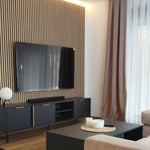
Project: Living room with wooden acoustic panels
Updated on 24 October 2024
Next post

Acoustic wooden panels: A combination of decoration and acoustics
Updated on 21 July 2024

